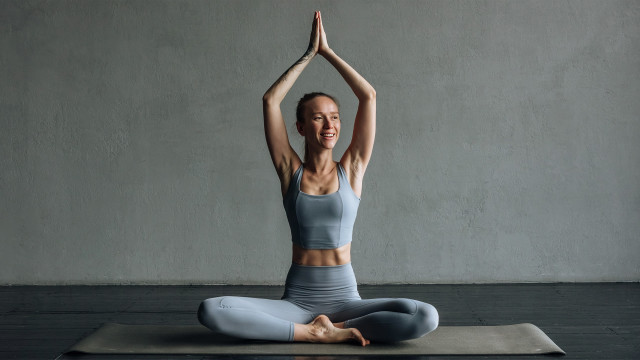8 Common Myths About Whirling

The act of whirling looks magical and mysterious, which can lead to many misconceptions about what it is. At its core, whirling is a physical movement that arises from stillness. In the balance of motion and stillness, we experience meditation.
Whirling meditation brings harmony to our inner space and grace to our outer form. Our consciousness widens and becomes vast, which can feel like a trance. To sustain the whirling, you must maintain sharp attention and awareness in the present moment. The polarity of relaxed alertness is what makes whirling beautiful and meditative.
Islamic Sufi mystics from the 13th century became renowned for the whirling dervish caravans they created. Many cultures also incorporate some form of whirling into their sacred dance. With this ancestral ritual practice, some consider whirling a religious act that is strict in nature, requires a specific uniform, and is meant only for a select few; however, whirling precedes religion and cultural norms.
Here, I uncover some myths around the practice of whirling and invite everyone to try. My rule of thumb? If you can walk, you can whirl.
Myth #1: Whirling is just like dancing
While a whirling meditation may resemble a regular dance, it is not.
Whirling is a meditation that brings grace to our outer form. This grace makes the movements appear like a dance, but the depth of meditation brings beauty to this form.
The act of whirling is a movement composed of one turn. To sustain the continuity of this perpetual turning, one must be very centered. When we become centered, our body is unified, turning ‘round and ‘round in harmony. It is that harmony that creates grace within us. And that grace is what makes whirling look like a dance.
So it may appear like a dance, and one could even present it as a dance, but it doesn’t start or end as a dance.
Myth #2: Whirling is a workout
Sometimes, people hear “spinning” and think of indoor cycling classes. Or they see the movement required and believe it must be some exercise.
Whirling is a meditation. Because of its physical form and the discipline required, it can influence personal fitness, but the practice starts and ends as a meditation.
It is impossible to sustain a long practice if the meditative orientation is missing from a whirling practice, no matter how in shape one might be. To maintain the consistent movement of whirling requires being centered, not fit.
Myth #3: Whirling requires a group
Traditionally, we see people whirling in groups, so we tend to think of it as a group practice. While whirling in a group can be helpful, it is not imperative and should not keep anyone from exploring the practice. I’ve had my deepest, most profound experiences whirling alone, and much of my whirling practice is done independent of others.
You can whirl alone, and you can whirl anytime you like. You can set up your own rules and let your body guide you in a personalized practice. Do not think of whirling as a strict discipline — there are no hard rules, and we are not practicing to achieve results.
Whirling brings us to a place where we can let go of all achievements, a beautiful space to arrive.
Myth #4: Whirling is a spaced-out, zoned-out trance
Whirling is a very natural and experiential practice that requires deep presence. To sustain the act of whirling, you need sharpness and awareness in the present moment. To be aware of the stillness within while the body is in motion creates polarity — we must remain effortlessly attentive in every moment.
This presence-oriented awareness is an intensive meditation and our tool for creating inner and outer balance. With whirling, there is only this moment, here and now, to hold ourselves safely in balance while turning in meditation and bliss.
Eventually, while whirling, you may tap into a trance-like state where consciousness widens and expands, but we never “zone out” in whirling — we are always very present and in our bodies.
Myth #5: Whirling is religious
Whirling is a phenomenon of nature. We align our body to the movement of turning. It’s a universal force that shapes all forms and creations. It is available to everyone and not bound by religion, caste, culture, gender, or age.
Myth #6: Women can’t whirl
Islam has strict rules around women and whirling; however, women can still whirl in Islamic traditions under specific circumstances. Outside of Islamic traditions, whirling as a meditative art form or sacred dance is available to anyone.
Myth #7: Whirling is only for the young and agile
You do not need to be super fit or young to whirl. Believe it or not, the older you are, the better you whirl. Whirling requires intense grounding, and I have noticed that older people are naturally more grounded thanks to their age.
They tend to have an earthiness in their bodies, and they take to whirling more easily than younger practitioners. I have observed many older people with deep, stable breathing, which allows them to go on and on and on.
Remember, if you can walk, you can whirl.
Myth #8: Whirling requires a skirt
You can whirl without a skirt. When one wears a skirt, additional dynamics can be learned, but those are not necessary. Even without a skirt, you can have beautiful, transformative experiences.
Whirling is open to anyone. Through whirling, I’ve found that I can stay centered and still my mind — even amid chaos — and I invite everyone to experience this for themselves.
Try this course, Whirling: A Centering Practice for Heart-Body Connection, with sacred dance teacher Zia Nath, as you learn to build a meditative practice.
Header photo: tugbahasbal/iStock/Getty Images Plus







